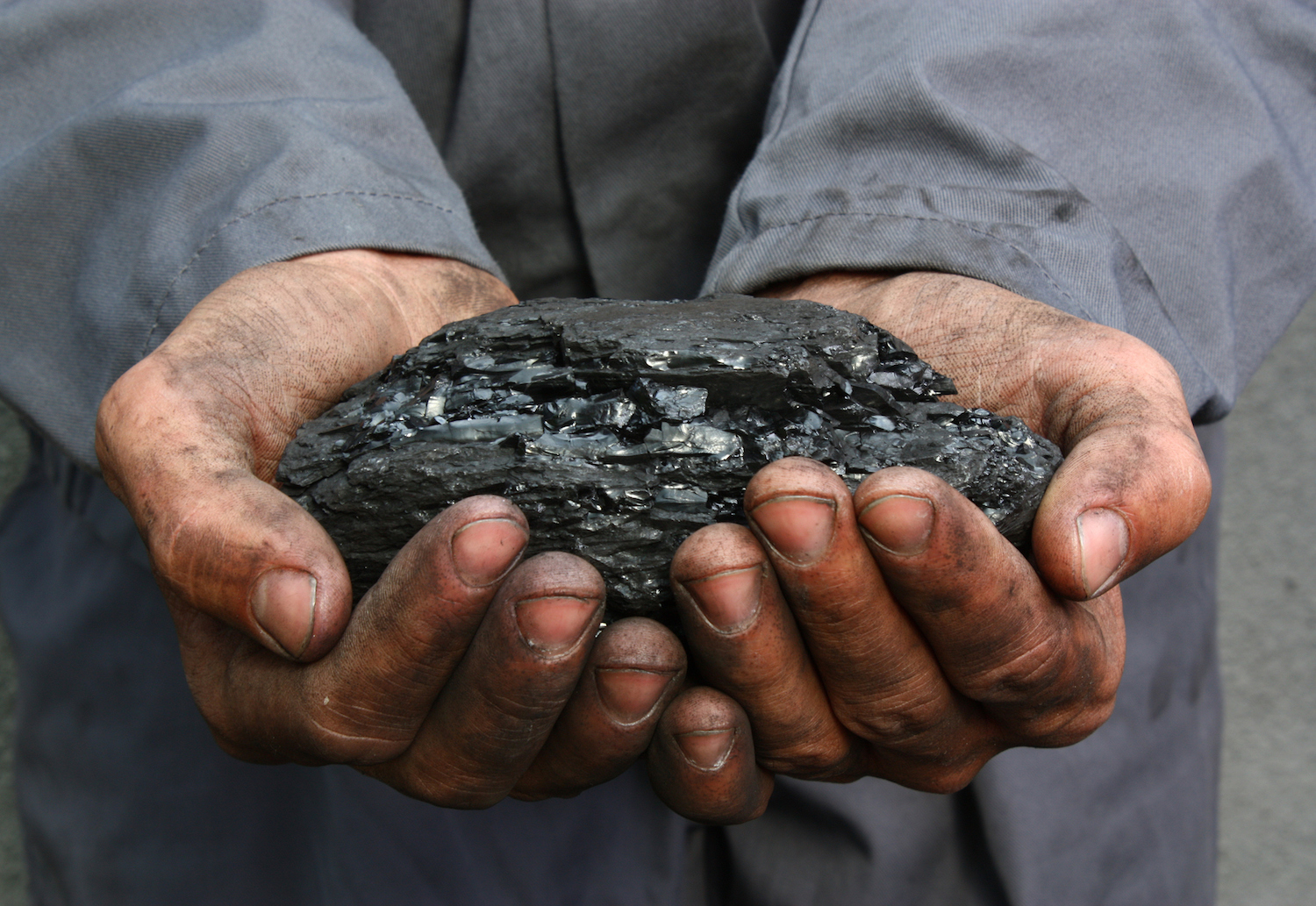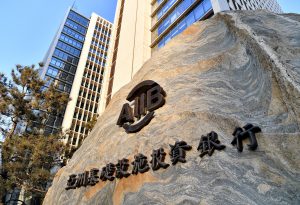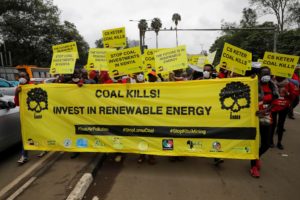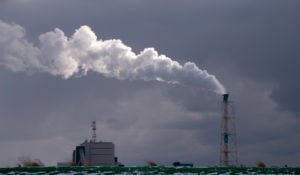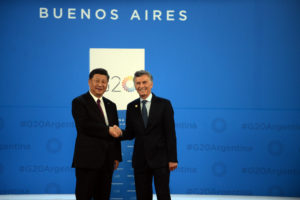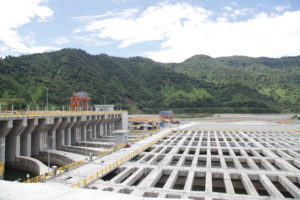The government claims cheaper batteries are needed before renewables can be a consistent enough power source. But the real issues binding Pakistan to coal are: past agreements (it’s difficult to undo old contracts with China to build coal plants); crony capitalism (those in charge can control the supply and price of coal better than sunshine or wind); circular debt (unpaid government subsidies and household bills); power theft; and faulty transmission lines.
Roshan Nabi and her family are suffering another long power cut in the blazing summer heat of Karachi. The 40-year-old mother of five looks at her neighbours enviously as they enjoy free uninterrupted electricity.
“All that I wish for is just one fan to keep my kids cool,” said Nabi, the sole bread winner of her family, who works as a cleaner at two private homes.
Nabi, who has an ailing and unemployed husband, pays a steep monthly bill for the episodic power she gets from the grid. “Their lives have certainly transformed,” she says of the many in her neighbourhood of Korangi who have installed rooftop solar panels, usually to supplement what comes through the grid. “But for me it would be a minimum of six months’ salary for this luxury.”
Sikandar Sardar is among the nearly 50 million Pakistanis who lack access to grid electricity altogether. Many in his neighbourhood of Musharraf Colony, in the capital of Islamabad, also rely on solar: “We have had the solar system for two years and have had no problem since then with power. My brother installed it [with help] from his [neighbourhood] committee.” It cost PKR 60,000 (USD$381) and now the family of six can power two fans, three lights and a small television.
The high upfront cost is the biggest challenge facing those in Pakistan who are turning to renewable energy, mostly solar, to make their lives more comfortable.
Energy experts suggest that renewables are Pakistan’s future, but the government continues to look the other way. Currently, more than 60% of the electricity generated in Pakistan comes from fossil fuels and this is set to grow.
Pakistan has suffered crippling energy shortages in the past and the government has sought to fill this capacity gap with coal power financed by China. Under the Chinese Pakistan Economic Corridor (CPEC) – a flagship part of the Belt and Road Initiative – China is investing in 21 energy projects: nine coal power plants, seven wind farms, three hydropower schemes and two high-voltage transmission line projects. The majority of the money has gone into coal: 70% of the 13.8 gigawatts worth of power projects in operation and planned are coal fired.
“Finding international financing for coal had been difficult, with China the only country willing to invest,” said Shahzad Qasim, the prime minister’s special assistant on the power sector. “For solar and wind or other renewables we can get financing from anywhere.”
But the government is not ready to make the shift. “It may take us another 10 to 15 years before we can say no to coal,” said Qasim. Because both wind and solar were intermittent the country will “have to continue with coal” until the baseload power can be replaced by cheaper batteries, he said.
Stranded assets
This may come too late. The investment in coal continues despite the financial troubles in the sector. Contributors include a vicious cycle of unpaid debts, major losses due to shoddy transmission lines and power theft.
In April, the 1,320 megawatt (MW) coal plant in Sahiwal in Punjab province, the first energy project under CPEC built by China Huaneng Shandong Rui Group, was on the brink of closure after the government was unable to pay the PKR 20 billion ($127 million) it owed the developer.
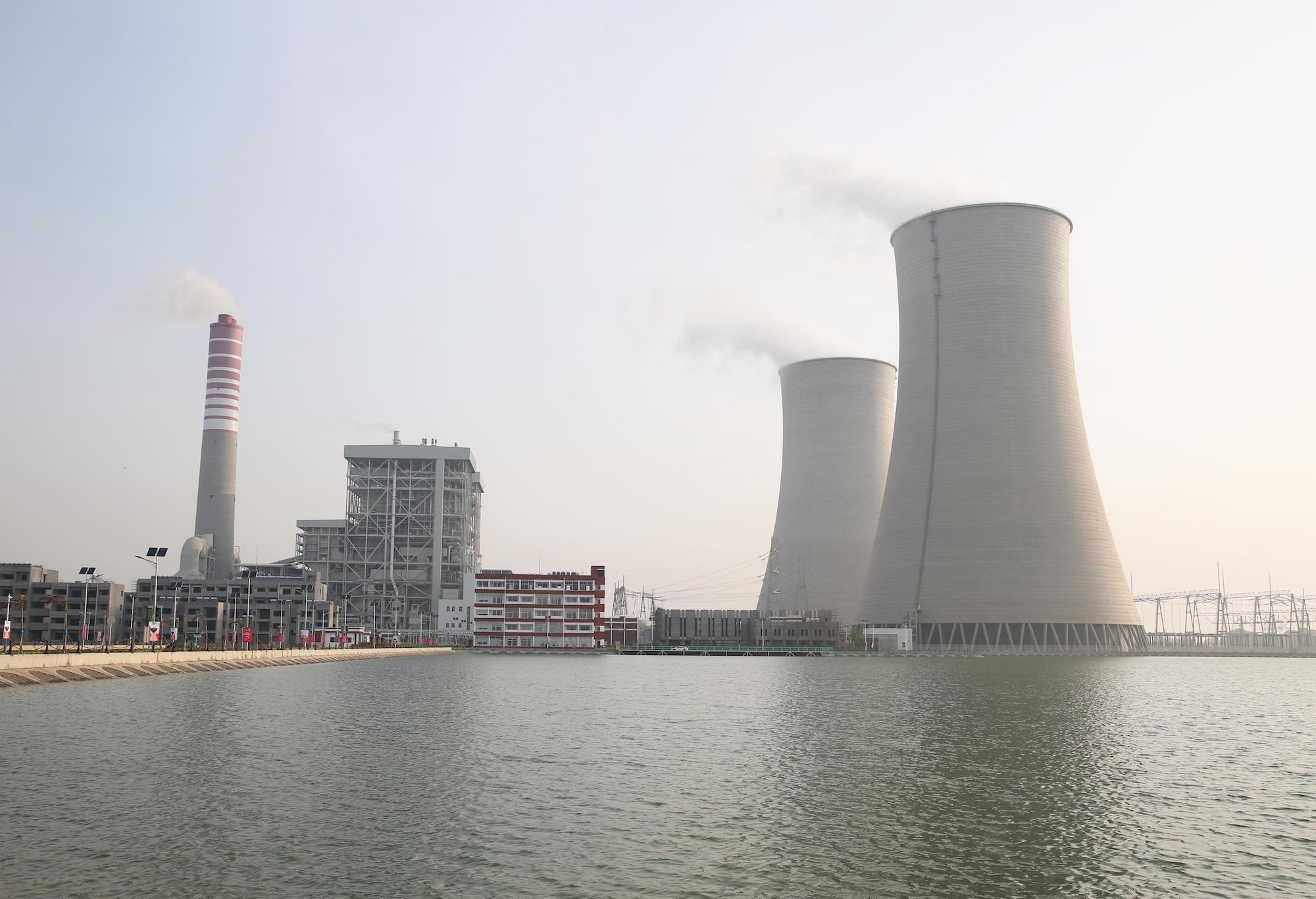
Sahiwal power plant in Punjab (Image: Alamy)
May, the 1,320 MW Port Qasim power plant in Karachi, jointly developed by PowerChina and Qatar’s Al Mirqab Capital, also hit financial difficulties, just a year after operations began, due to rising debt and the soaring cost of imported coal. Its chairman told media that his company was “facing the challenging problem of payment of arrears” to the tune of PKR 21 billion ($133 million).
And these plants cost a lot to maintain as well, with the government paying a fixed amount every month depending on their installed capacity rather than how much energy is generated. “We have a history of doing things the wrong way,” said Vaqar Zakaria, managing director of Hagler Bailley Pakistan, an environmental consultancy firm.
Despite this, two more plants using imported coal are under construction. China Power Hub Generation Company’s 1,320-megawatt coal plant in Hub, Balochistan province, will start commercial production by August. Another 1,320-megawatt plant, at Jamshoro in Sindh province, will be operational in 2021, using 80% imported coal and 20% local Thar lignite. And two 330 megawatt coal-fired plants are being developed in Tharparkar, Sindh, using indigenous coal, by Engro Powergen Thar and the China Machinery Engineering Corporation. Coal from the Thar desert – one of the largest untapped coal deposits in the world – may be cheaper than imported coal, but it is particularly dirty and low energy.
There is still time for Pakistan to jump out of the coal cauldron
“By insisting on running these plants, the state is indirectly robbing people of its rights to seek better, cleaner and more reliable options,” pointed out Sohaib Wasim, a senior officer at WWF Pakistan.
A recent report from Chinese NGO Greenovation Hub has warned that the Chinese-financed coal plants risk locking Pakistan into a high emissions energy pathway and creating “stranded assets” – with huge potential financial and reputational losses due to strengthening global environmental standards.
Environmental concerns aside, the economics of coal clearly no longer add up. Qasim acknowledged that given Pakistan is already in debt, importing fuel would be nothing short of economic “suicide”. But the ruling Pakistan Tehrik-e-Insaf government says it cannot undo past decisions and contracts with China to build coal plants.
The government has taken some positive steps to increase the role of renewables in its energy mix, recently reversing a three-year ban on investing in solar and wind placed by its predecessor. The Alternative Energy Policy 2019 has been finalised and should be approved in a few months, said Qasim. “[The policy] states that as much as 30% electricity generation capacity will be from solar and wind and in the next five years as we aim to install 18,000 megawatts,” he added.
As the world says goodbye to coal, Pakistan opens new plants
By embracing coal, Pakistan is bucking a global trend. By 2050, the International Renewable Energy Agency (IRENA) predicts that the share of renewables in power generation will rise to 86% globally, compared to 25% today, with 60% of that share coming from solar and wind.
Omar Cheema, director of Vivantive Ltd, an advisory service for energy projects and technology ventures, remarked: “Pakistan is splurging on a coal supply chain with terrible timing, when it is becoming history elsewhere.” He also predicted that the coal projects will end up as stranded assets.
The fatal attraction of policymakers to coal is not technological or economical, said Cheema. It is vested interests: “Solar and wind energy don’t suit crony capitalism the same way as fossil fuels. You can control fossil fuel supplies like the import contract or access to the mines. But how are you going to do it for sunshine or how the wind blows?”
Let people invest
There is still time for Pakistan to jump out of the coal cauldron, argued Zakaria. The price of renewables is low there and IRENA estimates that, globally, they will be price-competitive with fossil fuels by 2020.
Unfortunately, Pakistan is struggling to find local investors interested in renewables.
Zakaria said rather than investing in big wind farms, or mega hydro and solar parks, the best way to boost renewable electricity is to give people a chance to produce their own. “Bring in the capital from the people, let them be investors and give them subsidies,” he said. With such facilitation every home could be lit up by solar power, he suggested.
This can happen by shifting away from the state’s present centralised control of the power sector, he said. If power distribution companies cannot stem theft, for example, then privatise the set up.
Is China to blame?
While China has taken giant steps to clean up air domestically, in a bid to fight air pollution and climate change, it is under continued criticism for promoting dependence on fossil fuels and has earned the “lender of the last resort” label for projects that western banks deem environmentally unsound.
It is not only in Pakistan that China is putting huge investment into coal. A recent World Resources Institute study on Chinese investment in energy and transportation under the Belt and Road Initiative said it was “heavily tied to carbon-intensive sectors” and not aligned with host countries’ commitments to the Paris Agreement on climate change. Chinese financial institutions and corporations are funding over one-quarter of the 399 gigawatts of coal plants currently being built outside China, according to the Institute for Energy Economics and Financial Analysis, with many of these being built in South and Southeast Asia.
It’s easy to point the finger at China, says Qasim, but “all loans come with strings attached” and Pakistan has made a habit of “cutting bad deals”.
Cheema added it was unfair for the Chinese government to be made responsible for Pakistan’s spending “binge” on coal projects. “It is ultimately the local policy makers, politicians and bureaucrats, who decide their country’s energy portfolio and what projects to develop with the Chinese government and whether the country has a forward-looking energy infrastructure or the opposite.”
This article was first published on The Third Pole
